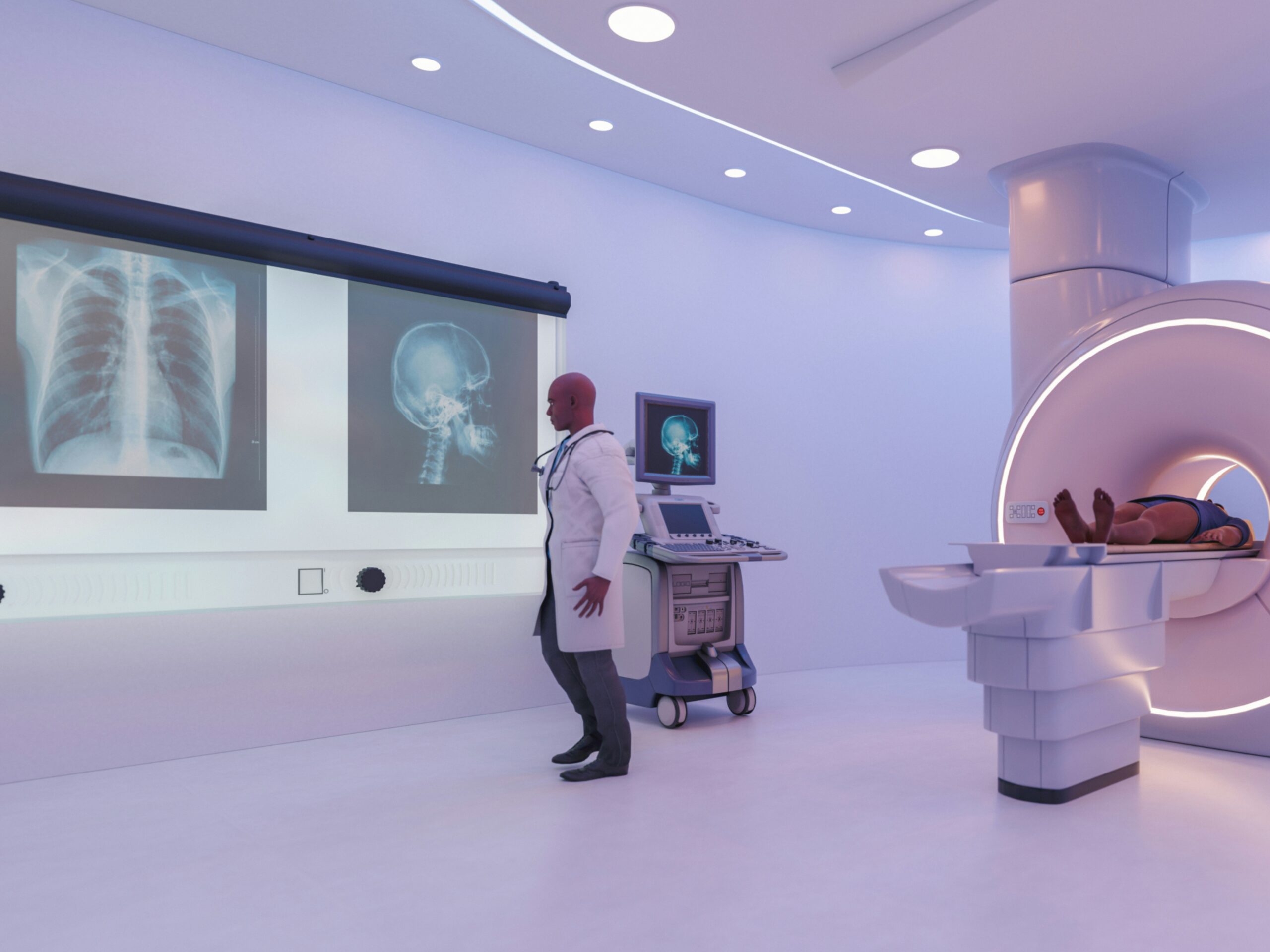
The healthcare industry has always sought ways to improve patient care, reduce errors, and enhance the efficiency of medical procedures. One of the most groundbreaking innovations in this field is the integration of Artificial Intelligence (AI) in radiology. By combining AI’s precision with radiologists’ expertise, this technology is transforming how medical imaging is conducted, analyzed, and applied in patient treatment. AI has the potential to not only increase the accuracy of diagnoses but also improve patient outcomes by offering faster and more reliable results.
AI’s Role in Revolutionizing Radiological Imaging
Radiology has long been a cornerstone of diagnostic medicine, enabling healthcare professionals to detect and diagnose various conditions, from broken bones to tumors and organ abnormalities. With the advent of AI, the field has entered a new era of precision. Machine learning algorithms, a subset of AI, can now analyze medical images with remarkable accuracy, often surpassing human capabilities in certain aspects. These algorithms are trained on vast datasets of images, learning to recognize patterns, anomalies, and subtle details that the human eye may miss.
AI-powered software can interpret radiological images such as X-rays, CT scans, MRIs, and ultrasounds much faster than traditional methods, enabling radiologists to make quicker decisions. In many cases, AI can even assist in detecting conditions at earlier stages when they are most treatable. For instance, in oncology, AI systems can help identify tiny tumors that may not be visible through conventional methods. This ability to detect and interpret images with high precision is one of AI’s most significant contributions to radiology.
Improving Diagnostic Accuracy with Artificial Intelligence
One of the most significant advantages of AI in radiology is its potential to improve diagnostic accuracy. AI systems can assist radiologists by highlighting areas of concern in imaging data and offering suggestions for further analysis. In a study comparing the diagnostic capabilities of AI algorithms to those of experienced radiologists, AI demonstrated its ability to identify diseases like breast cancer, lung cancer, and brain disorders with a higher degree of accuracy and fewer false positives.
Furthermore, AI technologies can also help radiologists by providing detailed insights that are more consistent and reproducible than traditional manual readings. While human judgment can vary depending on experience, fatigue, and other factors, AI can offer a more standardized approach, reducing the risk of misinterpretation and ensuring greater consistency across different practitioners and healthcare facilities. This consistency is critical in improving the overall quality of care, especially in regions with a shortage of skilled radiologists.
AI’s Impact on Workflow and Efficiency in Radiology Departments
Another area where AI is making a significant impact is enhancing radiology departments’ workflow and operational efficiency. Radiologists are often tasked with reading a high volume of images daily, which can lead to burnout, fatigue, and missed diagnoses. AI technologies can streamline this workload by automating routine tasks, such as image pre-processing, measurements, and basic interpretations. This allows radiologists to focus their expertise on more complex cases, improving efficiency and job satisfaction.
Moreover, AI tools can quickly prioritize cases based on urgency, ensuring that critical diagnoses are flagged for immediate attention. For example, AI can soon highlight signs of conditions like stroke, brain hemorrhage, or pulmonary embolism in emergencies, alerting medical teams faster than traditional methods. By reducing the time it takes to process and analyze images, AI supports more effective and timely care delivery, ultimately benefiting patients and healthcare providers.
Enhancing Patient Outcomes Through Early Detection and Personalized Treatment
AI’s role in improving patient outcomes goes beyond diagnosing diseases accurately and efficiently. The ability to detect health issues early—before they become more serious or difficult to treat—is a key factor in better patient outcomes. With AI’s assistance, radiologists can detect minute changes in imaging that might go unnoticed during a standard exam, enabling earlier intervention. Early detection is especially crucial for diseases like cancer, cardiovascular issues, and neurological disorders, where the earlier the diagnosis, the higher the chances of successful treatment.
In addition to early detection, AI can help tailor personalized patient treatment plans. By analyzing a patient’s imaging data and other health information, AI systems can assist healthcare providers in identifying the most effective treatment options for that individual. Whether suggesting a specific surgical approach, recommending targeted therapies, or guiding post-treatment care, AI can help create more precise and personalized care plans, enhancing the overall treatment experience and improving the patient’s quality of life.
The Future of AI in Radiology
While AI in radiology is already proving its value, it is still in the early stages of its full potential. As technology evolves, AI is expected to become even more integrated into clinical workflows. Future developments in AI may involve enhanced algorithms that can analyze not just images but also data from other diagnostic sources, such as genetic information and patient medical histories, for a more holistic approach to diagnosis and treatment.
Moreover, as AI systems become more sophisticated, they will likely be able to handle a wider variety of tasks, from assisting in minimally invasive procedures to offering real-time guidance during surgeries. AI could even extend its reach into remote or underserved areas, where access to highly skilled radiologists may be limited. Through telemedicine and AI-driven diagnostic tools, patients in remote regions may gain access to high-quality care without needing to travel long distances.